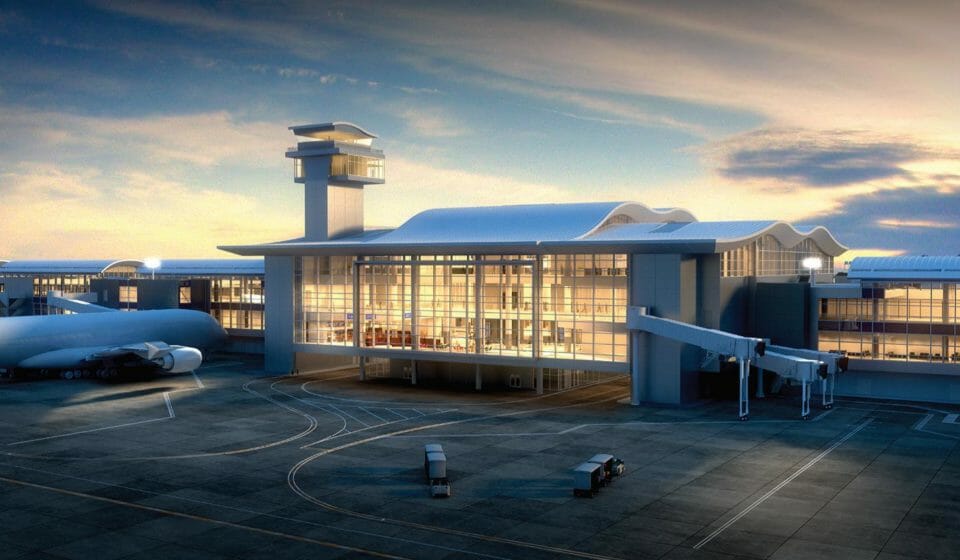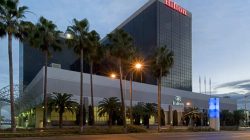To help alleviate the eyesore of using remote buses at the TBIT, LAX is building a new $1.6 billion Midfield Satellite Concourse (MSC) in addition to the TBIT that will include 12 new aircraft gates, two of which are capable of handling Group VI (Airbus A380 and 747-8I) aircraft. The remaining ten will be able to accommodate all version of the Boeing 777 and 787, the Airbus A330 and presumably, the Airbus A350.
Editor’s Note: This is the final installment in a three-part series focusing on LAX Airport. Part I focuses on a special media tour organized by Los Angeles World Airports to check-out the new facilities at LAX and China Eastern Airlines to view its in-flight products. Part II focuses on the commercial state of LAX airport pertaining to terminal layouts, airlines serving LAX, and the case for change to elevate the airport experience at LAX. This finale focuses on the commercial projects that LAX is undertaking.
Terminal Enhancements: the MSC and Terminal 1.5
The MSC will be connected to the TBIT – which will then be referred to as “Bradley West” – via an underground tunnel with moving walkways. Arriving passengers will follow the elevated corridors above the moving walkways to proceed to the Federal Inspection Station (FIS) facility at the TBIT. Behind-the-scenes, there is a Baggage Optimization Project (BOP) underway to support the additional baggage-processing capacity that will be introduced by the new gates. A core element of this project is constructing the North Baggage Handling System (NBHS) to allow for extra bandwidth to sort and place luggage for inbound and outbound departures. The NBHS, moreover, will replace the current sortation system used at the TBIT, and have the ability to process over 6,000 checked bags per hour.
Furthermore, there will be plenty of retail space, concessions, free public WiFi as well as airline lounges in the MSC. There will be a curvilinear roof that will complement the “overlapping wave” theme of Bradley West.
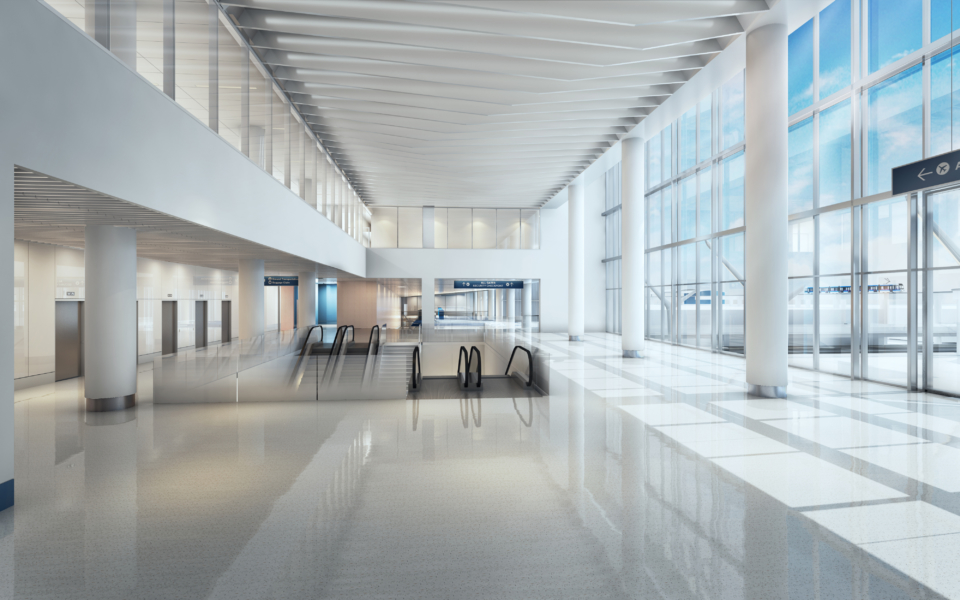
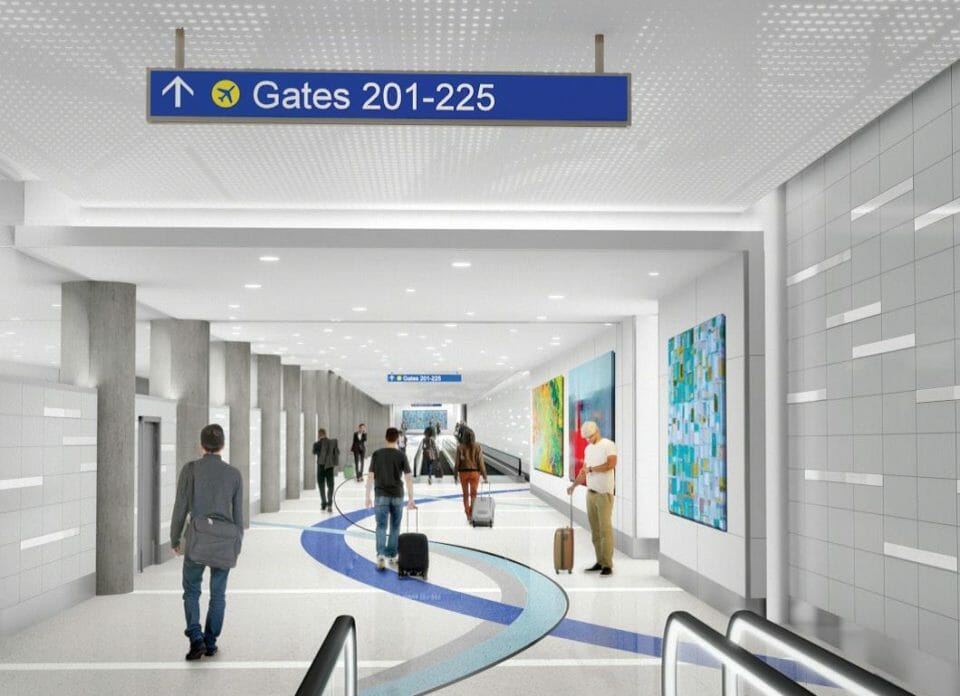

Exterior view of the MSC looking west, image courtesy of LAWA. On the north side of the airport, LAX is currently proposing the construction of a 65,000-95,000 square foot piece of land known as Terminal 1.5 – in between Terminals 1 and 2 – to help ease congestion and provide connectivity between the two terminals. The space would allow for additional passenger ticketing and baggage check-in counters, as well as security screening and office spaces. The NPV of the project is expected to generate $284,000 in gross revenue the first year and $2,400,000 over the course of ten years.
If approved, this project would benefit Southwest Airlines the most, which currently has to bus its international passengers arriving into and departing from LAX to the TBIT from Terminal 1. Southwest formerly operated its international operations out of LAX from Terminal 2 but had to relinquish this space in May 2017 as part of the, “Great Terminal Migration” when Delta took over Terminal 2 and 3 at LAX.
Subsequently, Southwest has requested to lease the vacant land between Terminals 1 and 2 to construct the passenger processing facility and support its growth at LAX. Since Terminal 1 lacks FIS facilities, Southwest had to relocate its international flights to the TBIT in May 2017 and relinquished check-in counters and offices in Terminal 2 that supported its international operations. Since there is not enough space in the TBIT to accommodate ticket counter and baggage systems for Southwest, the carrier relies on busing operations, which is a sub-optimal solution. So, in order to support its plans to grow international traffic, Southwest wants to lease this ground in between terminals 1 and 2 and construct the passenger processing facility and bus gate. It will also include a vertical circulation core connecting to the Automated People Mover (APM). More on that later.
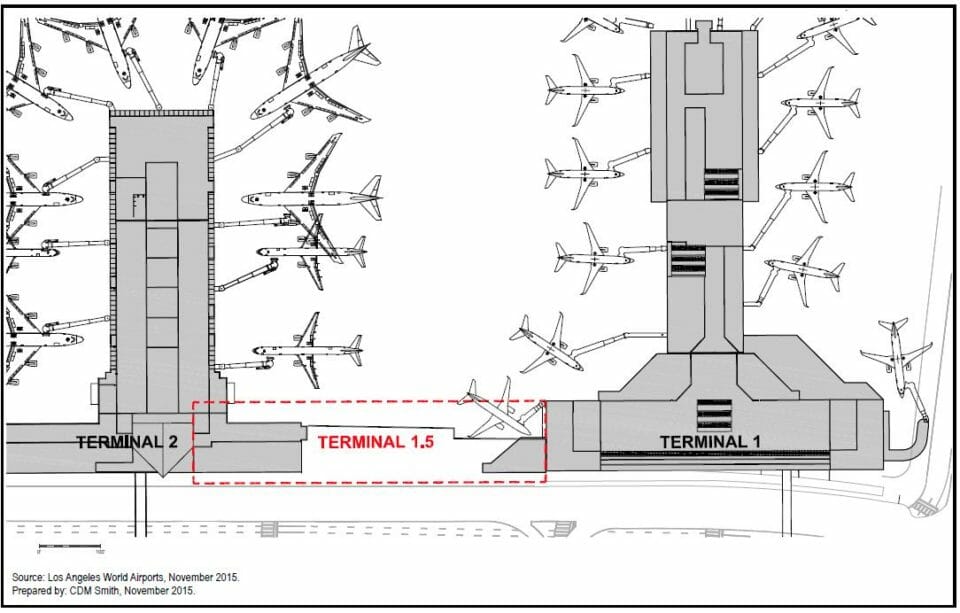
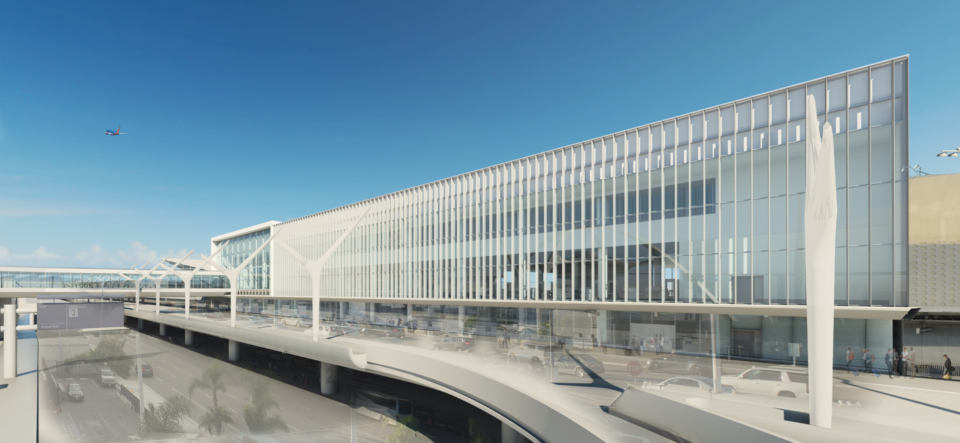
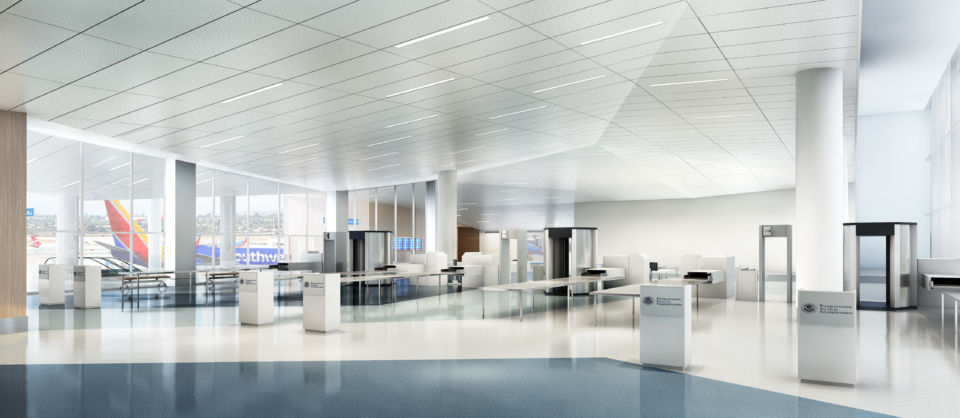
Delta is spending $1.9 billion over the next four years to improve its LAX terminals, with a long-term vision of revamping Terminals 2 and 3, building a “Sky Way” connector between Terminals 2 and 3, and eventually, creating an air-side connector to the TBIT that will replace the bus system. Delta paid $60 million for the move, which not only relocated its operations but those of 19 other carriers serving LAX (altogether comprising of around 40% of daily operations). Delta’s move intended to reduce operational headaches at LAX by decreasing average gate utilization from servicing 10+ flights per day to around 7 or 8.
Igniting the LAMP
To move passengers more efficiently around the airport, LAX is planning an elevated train. It’s the centerpiece of a $5.5 billion Landside Access Modernization Program (LAMP), which has four main components: 1) the train, or ‘automated people mover’ (APM); 2) a connection to ground-transportation facilities; 3) a consolidated rental car area, and 4) a link to public transportation.
The APM will serve as the primary pathway to link everything together. It will run along a length of 2.25 miles, ranging from 50-75 feet above grade, with the capacity to transport up to 10,400 passengers per hour. It will run 24 hours a day and be free for airport users.
There will be six “stops” constructed in total, with three located inside the Central Terminal Area (CTA) and three on the outside. Starting with the passenger terminals, the APM will have three “spines” that connect to the three stations at LAX, rather than run in a loop along the horseshoe. This means that there will be a “West Station” serving Terminals 3, 4 and the TBIT, a “Center Station” serving Terminals 2, 5 and 6 and the ATC Tower, and an “East Station” serving Terminals 1, 7 and 8. Many of these stations will also be connected to parking garages adjacent to each Terminal.
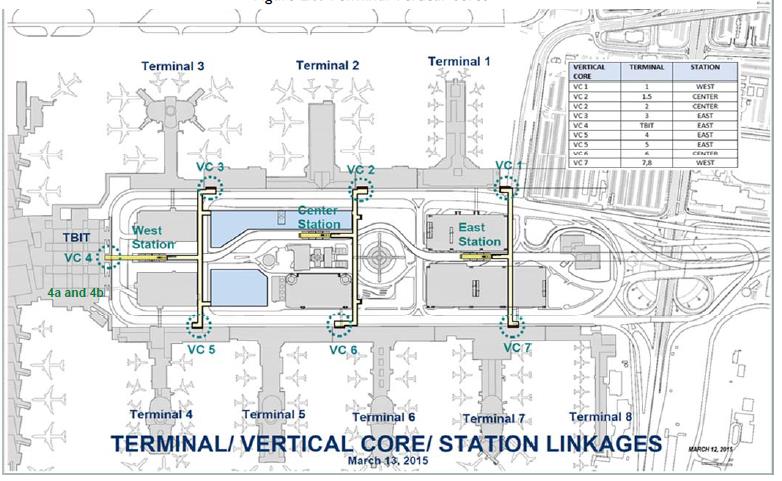
The construction of Terminal 1.5 will also include Vertical Core 2 (VC2) which wil connect to the APM. All three of the stations (East, Center, and West) will also be connected to parking garages adjacent to each terminal.
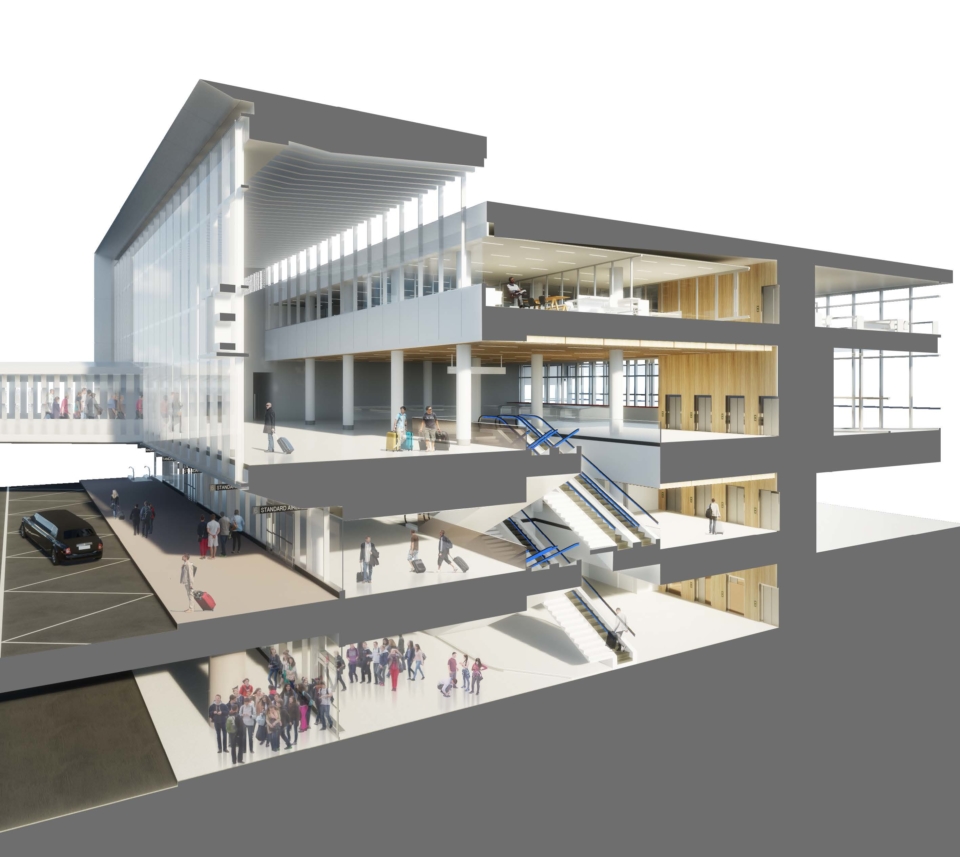
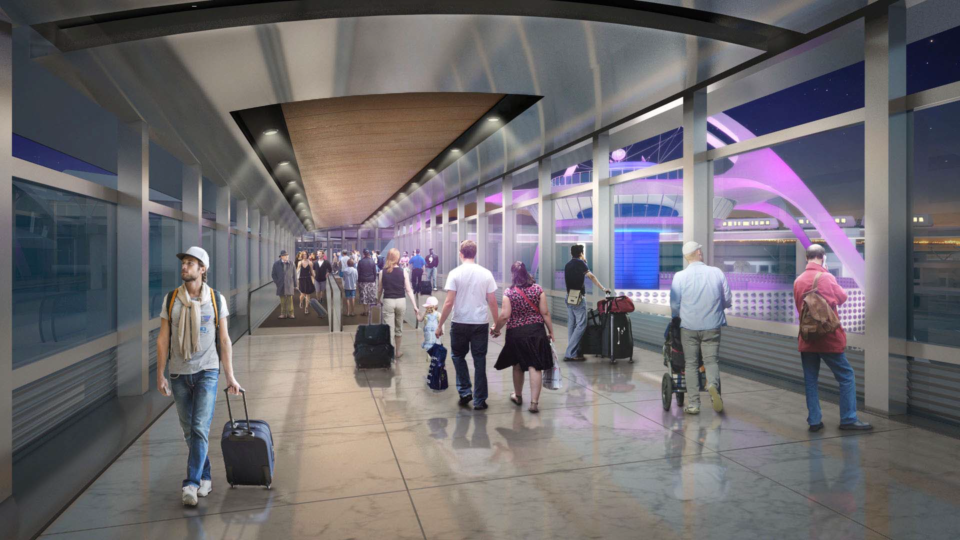
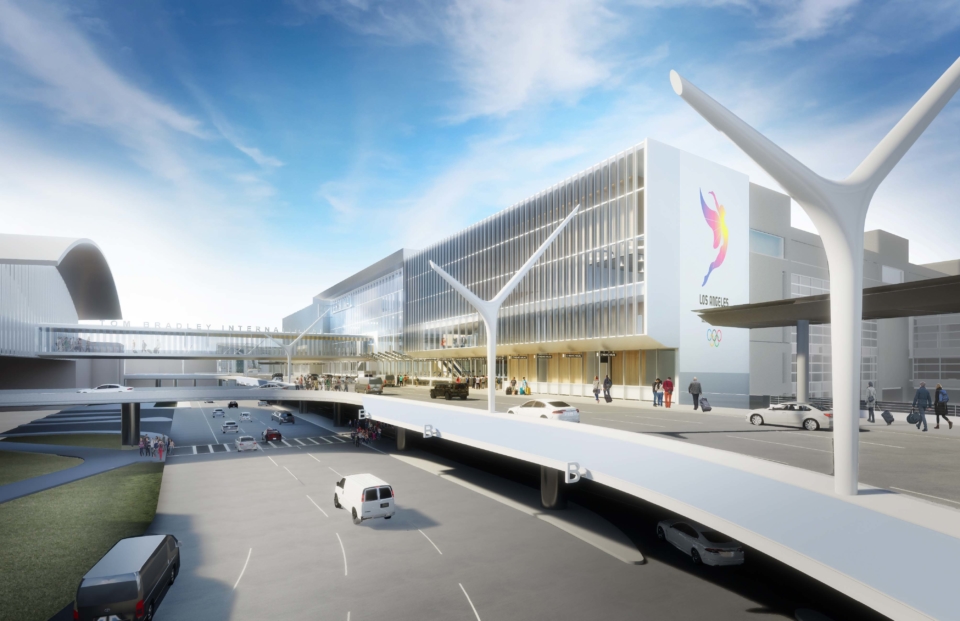
Outside of the terminal area, the remaining three stations will consist of two intermodal transportation facilities (ITF)—one east, one west. These will be places for passenger pick-up and drop-off by private vehicles and commercial shuttles, or for passengers and airport employees to park their vehicles and then connect to the terminals via the APM system.
The two ITFs will serve as locations for passenger pick-up and drop-off by private vehicles and commercial shuttles, or for use by passengers and airport employees to park their vehicles and then connect to the terminals via the APM system.
ITF West will be located near Westchester Parkway/Arbor Vitae Street and have two new adjacent and interconnected public parking garages. It will contain 6,800 parking spaces across 5-6 stories, covering a total of 3.1 million square feet. It will also be located close to many existing hotels and businesses along West Century Boulevard, making it easy for pedestrians to access the side as well.
ITF East will be located on a 21-acre site at the northeast corner of Aviation Boulevard and 98th street, and used primarily by private and commercial vehicles traveling to the airport. It will offer 8,300 parking spaces across 5 stories, and also measure 3.1 million square feet. ITF East will also serve as the connector station to the Metro Crenshaw and Green Lines, which will be a huge boon for fans of public transit in LA.
The CONRAC site will be a 68-acre area within Manchester-square. LAWA estimates that average travel time between the terminal curb and the rental car facility will be reduced by 14 minutes or fewer thanks to the APM and the CONRAC connectivity.
With the CONRAC located off-site and away from the Central Terminal Area, this is projected to eliminate more than 3,200 rental car shuttle trips on city streets and CTA roadways. Finally, the consolidated facility will utilize at least 46% less land compared to the existing state of scattered facilities.
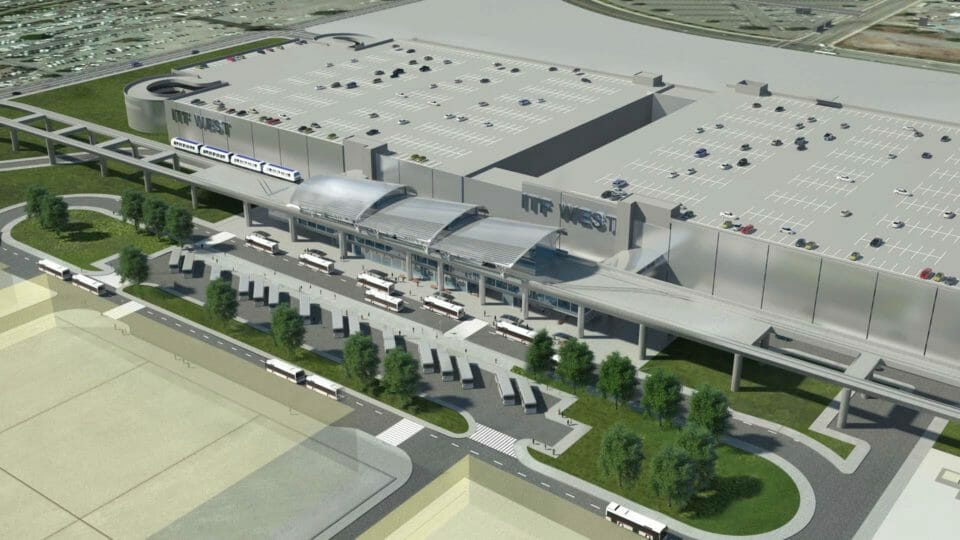
Other Innovations and Improvements
Biometric Boarding
British Airways is the first airline to begin testing self-service biometric boarding gates on international flights at LAX. This trial, using facial identification technology, offers passengers a faster boarding process without presenting a passport or boarding pass at the gate. LAX plans to continue working with airlines and Customs and Border Protection to expand this innovative program to help reduce wait times.
For biometric boarding, a passenger’s face is their boarding pass, and each passenger’s photo is captured by an E-gate system and then sent to Customs and Border Patrol to match the digital photo captured at the initial immigration process.
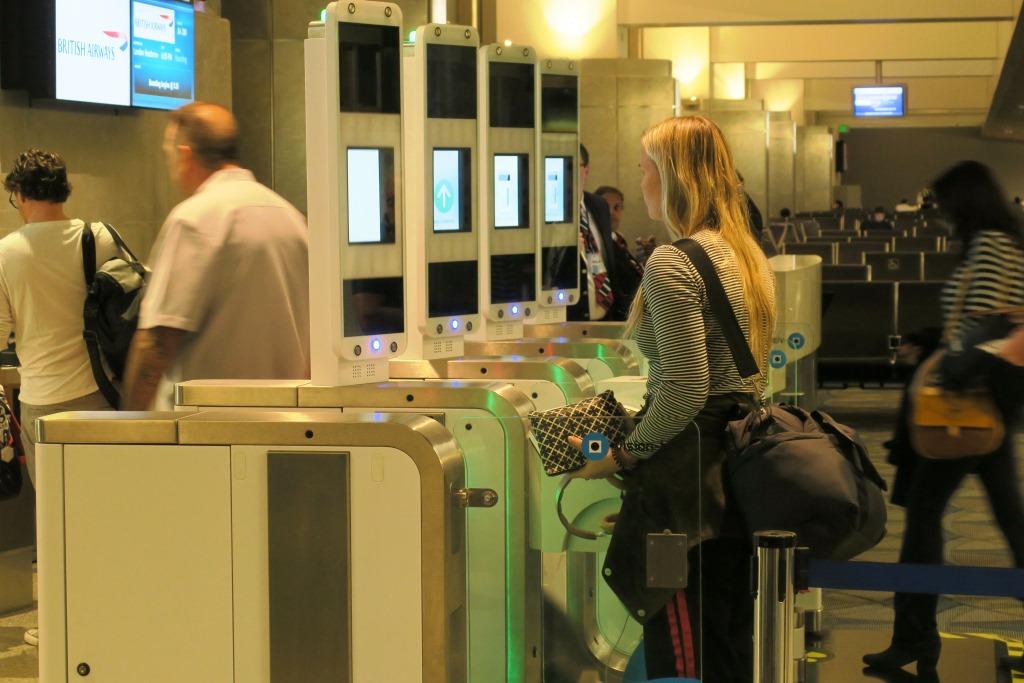
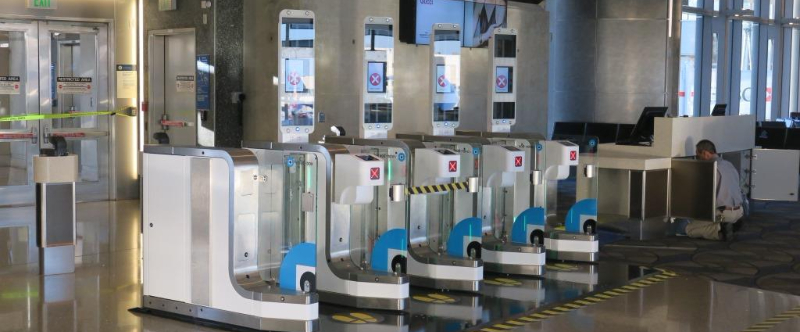
Automated Screening Lanes (ASL)
Seven of these have been placed into the TBIT, with the intention of completing an additional seven (so that 14 of the 16 lanes at TBIT will be automated, while two will be standard) to be able to screen 3,220 passengers per hour, an additional thousand over prior capacity volumes. There is an automated conveyor belt (check out california industrial rubber co. to know more about conveyor belts) which draws the trays into X-ray machines and then returns them back to the front of the line for other customers. Carry-on bags that trigger an alarm warning are pushed to a separate area to be isolated for additional checking. Furthermore, the trays are larger than the standard trays used in traditional security screening, as they are large enough to fit bags that can fit into overhead bins.
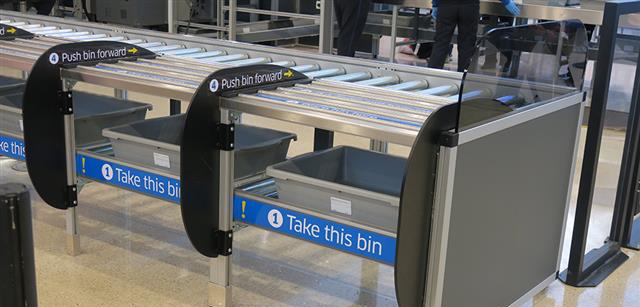
Smart Restrooms
LAWA has partnered with Tooshlights, a smart restroom traffic management system that helps passengers navigate busy restrooms using lighting systems. Real-time, venue-specific data is sent via Infax, a data-driven provider of IT solutions for airports, that tracks occupancy usage of restroom stalls. The lighting system is similar to parking garage lights, with red or green indicators to specify if a restroom is occupied or not. There are also touchscreens near the entrance/exit to provide feedback on the status of the restroom and identify issues that may require maintenance or custodial response.
Rohan would like to thank Charles Pannunzio, Becca Doten, John Erickson, Mark Waier, and Mario Lafaurie for their information in contributing to this story.


